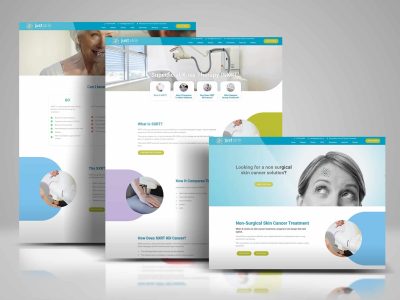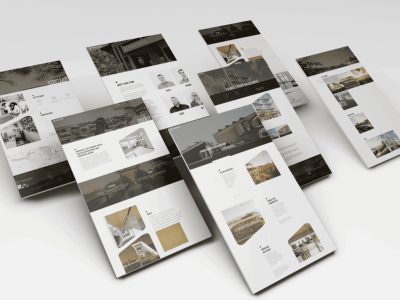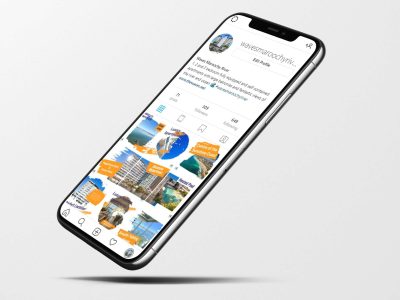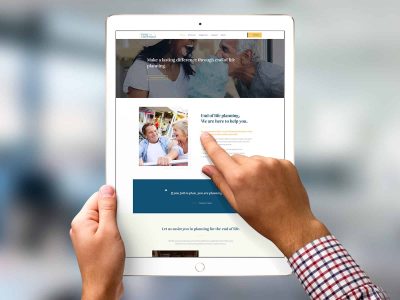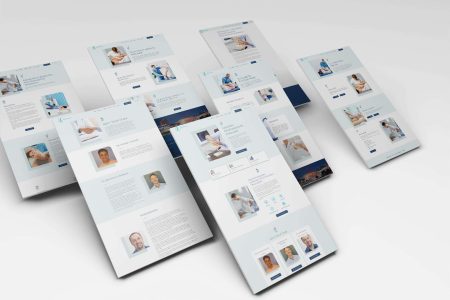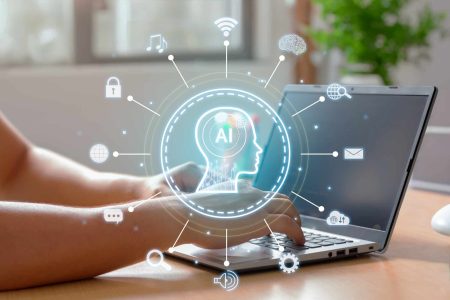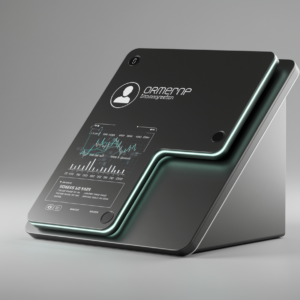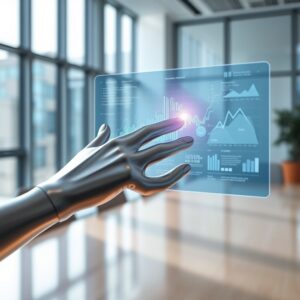In an era where digital presence is paramount, the dynamics of web design are rapidly evolving, steering towards a more responsive, intuitive, and user-centric approach. This evolution has been greatly propelled by the advent of artificial intelligence (AI) in web design, marking a significant shift from traditional methods to more sophisticated and efficient processes. As we delve into this transformation, we uncover the essence of responsive web design and how it forms the foundation of modern websites, adapting seamlessly to various devices and screen sizes.
At the heart of this evolution lie key AI-powered tools designed specifically for responsive design. These tools not only streamline the design process but also introduce a level of precision and personalization previously unattainable. The benefits of leveraging AI in web design are manifold, ranging from enhanced creativity and efficiency to a markedly improved user experience. By guiding designers through a systematic, step-by-step process, AI tools facilitate the creation of websites that are not only aesthetically pleasing but also highly functional and user-friendly.
Furthermore, AI’s role in optimizing user experience cannot be overstated. By analyzing vast amounts of data, AI tools can predict user behavior, enabling designers to make informed decisions that cater to the unique needs of their audience. This adaptive approach ensures that websites remain relevant and accessible across all devices and screens, a crucial aspect of responsive web design.
As we look towards the future, it’s evident that AI will continue to shape web design trends, introducing innovative solutions to traditional challenges. However, this journey is not without its hurdles. Designers must navigate the complexities of AI-driven design, finding the right balance between automation and creativity. In doing so, they pave the way for a new era of web design, one that embraces AI for cutting-edge, responsive websites that are not only visually captivating but also inherently intelligent and user-centric.
Content
Introduction to AI in Web Design
Defining AI in the Web Design Context
Artificial intelligence (AI) in web design refers to the implementation of machine learning, natural language processing, and other AI technologies to automate, improve, and personalize the design process. By enabling software to perform tasks that usually require human intelligence, AI introduces a new level of efficiency and innovation in creating responsive and aesthetically pleasing websites. This technology transforms how designers approach challenges, making it possible to foresee user needs and adapt designs in real-time.
The Role of AI in Automating Design Tasks
One of the most significant benefits of using AI in web design is the automation of repetitive and time-consuming tasks. This not only speeds up the design process but also allows designers to focus more on creative and strategic aspects of their projects. From generating code for specific design elements to optimizing images for faster load times, AI tools enhance productivity and ensure a seamless user experience across all devices.
Personalization Through AI
AI takes the concept of personalized web experiences to a whole new level. By analyzing user data, AI-driven tools can tailor website designs to meet individual user preferences, behaviors, and habits. This personalized approach ensures that each visitor encounters a unique and engaging experience, significantly boosting user engagement and satisfaction. In the realm of responsive web design, AI’s ability to provide personalized content dynamically across various screen sizes and devices sets the stage for more intuitive and adaptable websites.
The Evolution of Responsive Web Design
The concept of responsive web design has dramatically evolved from its initial inception to becoming an essential aspect of modern web development. Initially, as the internet became more accessible and the number of devices accessing it increased, websites faced significant challenges in providing a consistent experience across different platforms. Early solutions were often cumbersome, involving the creation of multiple versions of a website to cater to desktops, tablets, and mobile phones separately. This approach was not only inefficient but also unsustainable as the varieties of devices and screen sizes continued to proliferate.
Responsive web design emerged as a revolutionary solution to these challenges, introducing the concept of designing websites with a flexible layout that adapts to different screen sizes. This was achieved through the use of fluid grids, flexible images, and CSS media queries. The adoption of these techniques allowed for the creation of web pages that automatically adjusted their layout, ensuring that content was displayed optimally across various devices. As a result, the user experience improved significantly, as visitors could access content conveniently regardless of the device they were using.
The introduction of AI-powered tools has further propelled the evolution of responsive web design, pushing the boundaries of what’s possible. AI technologies have introduced new efficiencies and innovations, from automated testing of responsive designs across device types to the predictive analysis of user needs for better content adaptation. These advancements have not only streamlined the design process but have also enabled the creation of more dynamic, engaging, and personalized web experiences. Today, responsive web design is not just about adjusting to different screen sizes; it’s about creating rich, user-centered experiences that leverage the latest AI technologies to meet the ever-changing needs of users in the digital age.
Key AI-Powered Tools for Responsive Design
Automated Layout Generators
Automated layout generators are immensely valuable tools in the realm of responsive web design, leveraging AI technologies to create dynamic layouts that adapt seamlessly across devices. These tools analyze content and user interaction patterns to suggest and implement the most effective layout for all screen sizes. This not only saves designers considerable time but also ensures that the web designs are optimized for both aesthetics and functionality. By utilizing machine learning algorithms, these generators improve over time, continuously enhancing the responsiveness of web designs.
AI-Driven Testing Platforms
AI-driven testing platforms are revolutionizing the way designers approach the validation of responsive web designs. Traditionally, testing a website’s responsiveness across different devices and screen resolutions was a labor-intensive process that could leave room for error. However, with the advent of AI-powered testing tools, this process has become automated and more accurate. These platforms can simulate a wide array of devices and browsers, quickly identifying layout issues, compatibility problems, and other glitches that could affect user experience. This enables designers and developers to make data-driven adjustments to ensure optimal performance across all platforms.
Content Adaptation Engines
Content adaptation engines stand at the forefront of ensuring a personalized and responsive web experience. Utilizing advanced AI algorithms, these tools dynamically adjust the content presented to the user based on their device, preferences, and past interactions. This not only involves resizing images or adjusting text layout but also delivering content that is most relevant to the user’s context, enhancing engagement and satisfaction. In responsive web design, the ability to intelligently adapt content for different screen sizes without manual intervention marks a significant leap forward, providing a more intuitive and user-centric web experience.
Transform your business with custom AI solutions from a leading Artificial Intelligence Agency.
Benefits of Using AI in Web Design
The integration of AI into web design brings a multitude of benefits that significantly enhance both the efficiency of the design process and the overall user experience. One of the primary advantages is the automation of repetitive and mundane tasks. AI-powered tools can handle a wide array of routine jobs such as code generation, layout testing, and image optimization with unparalleled speed and accuracy. This not only accelerates the development cycle but also frees up designers and developers to focus on more creative and strategic aspects of web projects. As a result, the productivity of the design team is greatly boosted, allowing for more innovative solutions and a faster time-to-market for new websites.
Beyond streamlining processes, AI in web design also plays a pivotal role in achieving a higher level of personalization. Through the analysis of user data, including browsing habits, interaction patterns, and preferences, AI tools can create customized experiences for individual users. This adaptive approach ensures that each visitor receives content and design elements that are most relevant and engaging to them, thereby significantly improving user satisfaction and loyalty. Personalization powered by AI not only enhances the usability of websites but also contributes to more effective marketing strategies, as content can be tailored to suit the specific interests and needs of different user segments.
Moreover, the use of AI in web design enhances the ability to create responsive and accessible websites that adjust seamlessly to any screen size or device. AI-powered responsive design tools can predict the most effective layout configurations, ensuring optimal readability, ease of navigation, and overall visual appeal across multiple platforms. This adaptability is crucial in today’s digital landscape, where users expect a flawless browsing experience regardless of how they access a website. The improved responsiveness and accessibility not only cater to a broader audience but also positively impact search engine rankings, as sites that provide a better user experience tend to be favored by search algorithms. Overall, the integration of AI into web design heralds a new era of innovation, personalization, and efficiency, driving forward the creation of websites that are not only visually stunning but also supremely user-friendly and accessible.
Experience effortless, cost-effective social media management with AI technologies
Designing with AI: A Step-by-Step Process
Initial Planning and Data Collection
The first step in leveraging AI for web design involves thorough planning and data collection. This critical phase encompasses understanding the project’s objectives, defining target audiences, and gathering relevant user data that AI tools can analyze. By meticulously analyzing past user interactions, preferences, and behaviors, designers can identify patterns and insights that will inform the AI’s learning process. This preparatory work ensures that the AI tools are primed with a solid foundation of data, enabling them to generate design recommendations that are both data-driven and aligned with the project’s goals.
Implementing AI for Design Generation
Once the groundwork is laid with comprehensive data, the next step is to employ AI technologies to start generating design elements. At this juncture, AI-powered design tools come into play, utilizing machine learning algorithms to propose layouts, color schemes, typography, and more. These suggestions are not random but are based on the extensive dataset collected during the initial phase. Designers can interact with the AI, refining these recommendations to align with the project’s vision and the identified user preferences. This iterative process between human designers and AI ensures a harmonious blend of creativity and data-driven precision, leading to highly effective and personalized web designs.
Testing and Refining with AI
The final step in the AI-driven design process is rigorous testing and refinement. AI does not just contribute to the creation of design elements but also excels in evaluating their effectiveness. Using AI-driven testing tools, the design can be assessed across various parameters, including usability, aesthetics, and responsiveness across different devices. Feedback from these evaluations helps in fine-tuning the design, addressing any issues that may detract from optimal user experience. This continuous cycle of testing and refinement, driven by AI’s analytical capabilities, ensures that the final website is not only visually appealing but also functionally superior, offering a seamless and engaging user experience tailored to the target audience’s needs.
Optimizing User Experience with AI Tools
The advent of AI tools in web design has significantly elevated the standards of user experience (UX) optimization. By leveraging AI’s capacity for data analysis and pattern recognition, designers can now predict user behavior with a higher degree of accuracy. This enables a more intuitive design process where user needs are anticipated and met even before they arise. AI tools facilitate the creation of dynamic user interfaces that adapt in real-time, offering personalized experiences to users based on their browsing history, device preferences, and interaction patterns. Such a bespoke approach not only captivates users but also fosters a deeper connection with the website, enhancing user satisfaction and engagement rates.
Further enhancing the UX, AI-powered analytics tools perform continuous website monitoring, analyzing user interactions to identify any friction points or bottlenecks that may hinder the user journey. Through these insights, AI assists in pinpointing exact areas of improvement, whether it’s streamlining navigation, speeding up page load times, or making content more accessible across devices. Implementing these AI-driven recommendations leads to smoother, more enjoyable user experiences that are meticulously crafted based on solid, actionable data. This process of constant optimization ensures that websites remain agile, adapting to user expectations and technological advancements seamlessly.
Moreover, AI extends its capabilities to facilitate accessibility, making websites usable and enjoyable for a broader range of users, including those with disabilities. By adhering to accessibility guidelines and using AI to analyze website accessibility in real-time, web designers can ensure that their sites are inclusive, providing equal access to information and functionalities for all users. This crucial aspect of UX optimization not only demonstrates a commitment to inclusivity but also expands the website’s reach, opening doors to wider audiences. Through these multifaceted applications, AI tools have become indispensable in crafting superior user experiences, marking a transformative shift in how websites are designed and optimized for users today.
Elevate your business with DIGITALON AI’s custom AI services and solutions.
Adapting to Different Devices and Screens
Fluid Grids and Layouts
The cornerstone of adapting web designs to function seamlessly across various devices and screens lies in the use of fluid grids and layouts. Unlike fixed layouts that may appear distorted on different devices, fluid grids use percentages and viewport units to define element sizes, ensuring that all content scales smoothly according to the screen size. This approach maintains consistency and harmony in the design, providing a unified user experience whether accessing the website on a large desktop monitor, a tablet, or a smartphone. AI tools further enhance this process by automatically calculating and applying the most effective grid frameworks, optimizing layouts for every possible screen dimension without manual intervention.
Responsive Images and Media
Images and media play a crucial role in web design but can pose challenges when ensuring that they look good on any device. Utilizing responsive design techniques, such as setting images in relative units and employing the HTML `srcset` attribute, allows images to scale appropriately, ensuring they are displayed at the optimum size and resolution across devices. AI algorithms take this a step further by intelligently selecting and resizing images in real-time based on the device’s screen size and resolution, optimizing load times and enhancing visual appeal without sacrificing image quality. This not only improves the aesthetic aspect of the website but also significantly boosts its performance and user engagement.
Adaptive Typography
Typography is another vital element that requires adaptation for varying screen sizes to ensure readability and user comfort. Using scalable units for font sizes, such as ems or rems, allows text to adjust based on user preferences and device specifications. AI-powered design tools can automate this process, dynamically adjusting font sizes, line heights, and spacing as per the viewing environment. Moreover, AI can analyze user interaction data to determine the most readable typography settings for different devices, helping designers strike the perfect balance between style and functionality. Adaptive typography not only enhances the visual aspect of the website but also ensures that content is accessible and easily digestible for everyone, regardless of the device used.
AI and the Future of Web Design Trends
As we look towards the future, it’s evident that AI will play an increasingly central role in shaping web design trends. The unparalleled capacity of AI to analyze large datasets and predict user behavior presents a new frontier for personalized and adaptive web experiences. In the coming years, we can expect AI to drive the development of websites that not only respond to user actions in real-time but also anticipate needs and adapt content accordingly. This level of personalization and anticipatory design will drastically enhance user engagement and satisfaction, setting new standards for what users expect from digital experiences. Additionally, AI’s ability to learn and evolve means that these systems will become more sophisticated over time, continually refining and improving the user experience based on ongoing interaction data.
Another promising area where AI is set to revolutionize web design is in the realm of voice interaction and accessibility. With voice-controlled assistants becoming increasingly prevalent, AI’s integration into web design will facilitate the creation of voice-interactive websites. These platforms will be able to understand and respond to user commands, making browsing more intuitive and accessible, particularly for users with visual impairments or those who prefer voice commands over traditional navigation methods. This shift towards voice interaction underscores the broader trend of websites becoming more like services that actively engage with users, rather than passive sources of information.
Moreover, AI’s impact on web design extends to the creative process itself, offering tools that automate and enhance design workflows. From generating design elements based on brand guidelines to suggesting enhancements that improve site usability, AI empowers designers with insights and capabilities that were previously unimaginable. This does not mean the replacement of human creativity but rather an augmentation of it, where designers are free to innovate and experiment with the assurance that AI tools can handle the technical intricacies of responsive, user-focused web design. As we move forward, the symbiosis between AI technology and human creativity promises to unleash a new wave of web design innovations, leading to richer, more dynamic, and engaging digital landscapes.
Challenges and Solutions in AI-Driven Design
Balancing Automation with Creativity
One of the primary challenges in AI-driven design is striking the right balance between the benefits of automation and the irreplaceable value of human creativity. While AI can significantly speed up the design process by automating routine tasks and generating design elements, there’s a risk of ending up with designs that lack a unique, human touch. The solution lies in viewing AI as a tool to augment rather than replace the designer’s creativity. Designers should leverage AI for efficiency and to gain insights from data but remain at the helm of the creative process. This approach ensures that the final design not only meets technical and usability standards but also resonates on a deeper, emotional level with the user.
Ensuring Ethical Use of Data
The power of AI in web design largely stems from its ability to analyze vast amounts of user data to personalize and enhance the user’s experience. However, this raises significant ethical considerations regarding privacy and data security. It’s crucial for web designers and developers to implement robust protocols for data collection, storage, and processing, ensuring compliance with regulations such as GDPR. Furthermore, transparency with users about how their data is being used and offering control over their privacy settings can help build trust. Adopting an ethical approach to data usage not only safeguards user privacy but also enhances the reputation of the website and its creators.
Overcoming Technical Complexity
Integrating AI into the web design process introduces a level of technical complexity that can be daunting, especially for smaller teams or individual designers. The steep learning curve associated with AI technologies and the need for sufficient computational resources can pose significant barriers. One effective solution is the adoption of user-friendly AI tools and platforms designed specifically for web designers, which abstract away much of the complexity. Additionally, investing in education and training can equip designers with the knowledge and skills needed to harness the power of AI effectively. Collaborating with AI experts and participating in a community of like-minded professionals can also provide valuable support and resources to navigate the technical challenges of AI-driven design.
Conclusion: Embracing AI for Cutting-Edge Web Design
Embracing AI technologies in web design is not just a step towards innovation; it’s a journey towards redefining the boundaries of what’s possible in creating responsive, user-friendly, and dynamic websites. The fusion of AI with web design has opened the door to a world where websites can adapt in real-time to the changing needs and preferences of users, offering personalized experiences that were once the realm of science fiction. This paradigm shift encourages designers to think beyond traditional design constraints, leveraging AI to uncover new creative possibilities, enhance efficiency, and deliver richer, more engaging user experiences.
The transformative impact of AI on web design also poses its fair share of challenges, from maintaining the delicate balance between automation and creativity to ensuring ethical use of user data and navigating the technical complexities of AI integration. However, these challenges also present opportunities for growth and innovation. By adopting a thoughtful approach to AI integration, focusing on augmenting human creativity rather than replacing it, and continuously exploring new tools and methodologies, designers and developers can overcome these obstacles. The key lies in embracing AI as a powerful ally in the quest to create websites that not only look beautiful but also function seamlessly across an ever-growing array of devices and platforms.
Looking forward, the marriage of AI and web design signals a bright and exciting future for the digital landscape. As AI technologies advance and become more accessible, the potential for creating websites that truly understand and adapt to their users will continue to evolve. This evolution promises not only to enhance the user experience but also to empower designers and developers with unprecedented capabilities. By embracing AI, the web design community is poised to lead the charge into a new era of digital innovation where the possibilities are as limitless as our collective imagination.
Key Takeaways
As we navigate the intersection of AI and web design, it’s clear that the integration of artificial intelligence is not merely a trend but a fundamental shift in how we approach the creation of digital experiences. The synergy between AI and human creativity holds the promise of revolutionizing web design, delivering websites that are not only aesthetically pleasing but also highly functional, adaptive, and personalized. While challenges exist, they pave the way for innovation, urging us to explore and push the boundaries of what’s possible. The future of web design, propelled by AI, beckons a dynamic landscape where transformative user experiences become the norm. As designers, developers, and innovators, our task is to harness the potential of AI, moving forward with curiosity and creativity to shape a digital world that responds to and anticipates the needs of its users like never before.

